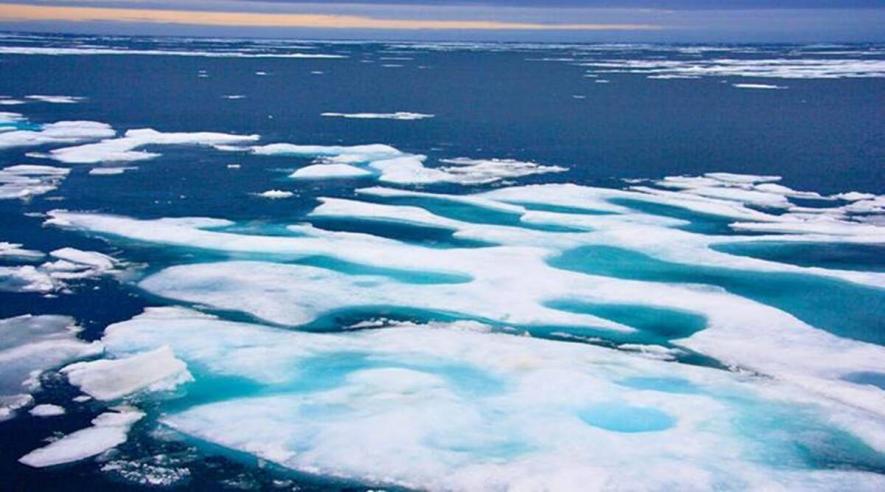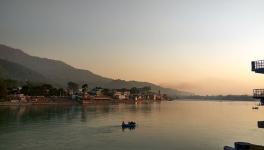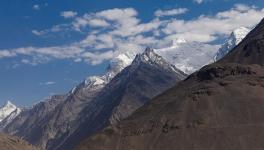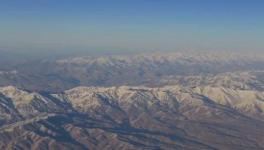Arctic Warming may be Causing Extreme Cold in Parts of Northern Hemisphere

Image Courtesy: The Indian Express
The recent unusually icy weather conditions in some parts of the United States and other parts of the northern hemisphere could be due to the warming of the Arctic region, claimed a recent study published in the Science. The study was based upon atmospheric data of decades.
The rate of warming in the Arctic is twice in comparison to the whole of the Earth. The rapid Arctic warming may adversely impact the weather and climatic conditions of regions away from the Arctic. The way for it to happen, as believed by many climate scientists, is by an alteration of cold wind around the North Pole.
Judah Cohen, who is a climate scientist at MIT (Massachusetts Institute of Technology), USA, and also the lead author of the Science paper, was quoted as commenting on the complexity of Arctic warming and its impact on weather conditions far away —"Conventional wisdom is that while global warming means more heatwaves, it will definitely lead to less cold spells and snowfall. But that's not quite true. There are mechanisms by which climate change can contribute to more severe winter weather too."
One of the crucial factors that govern the winter atmosphere over the Arctic is the 'polar vortex'. The polar vortex is a large region where cold air rotates and the vortex encircles both of the Earth's polar regions. The polar vortex isolates the atmosphere over the poles from warmer air that circulates near the equator. However, the polar vortex can stretch in some instances, leading to the leak of cold air to regions that would otherwise not experience severe cold. Sometimes, this may give rise to unusual weather conditions and cause fatalities in regions generally unprepared for frosty weather.
This kind of extreme cold conditions occurred in parts of the USA, Mexico, and other northern hemisphere regions during February this year. It resulted in over 111 deaths in Texas. The cold Arctic air hit these areas.
In the study published in Science, Cohen and his team collected the data obtained from satellite observations of atmospheric conditions in the Arctic. They compared 40 years of such satellite observations data with the data obtained from computational climate models. The computational models analysed how declining Arctic sea ice and snow affected airstreams in the region.
It needs to be mentioned that ice and snow reflect a significant portion of light into the space. On the other hand, oceans and land surfaces absorb more light falling on them. The decline of ice and snow from the Arctic and producing more water is expected to drive warming in the region.
In their analysis of 40 years of data, the researchers found that events of polar vortex stretching have remarkably increased in the past few decades. In addition to that, their computational models could reproduce this climatic behaviour when they included the effects of warming in the Arctic.
Dim Coumou, a climate scientist at the Free University of Amsterdam in the Netherlands, commented on the results saying, "This is an insightful new analysis. Its strength is that they have very carefully looked at a specific pattern of the polar vortex that is important for cold spells in particular places, and backed up their observational analyses with climate-modelling experiments." Coumou was not involved in the study.
However, there are debates on the idea of Arctic warming causing cold spells in regions falling in the mid-latitude away from the pole. "It remains to be seen whether the models are missing something, or whether the observations of polar-vortex stretching merely reflect natural climate variability," said Daniela Matei, a climate modeller at the Max Planck Institute of Meteorology in Hamburg, Germany, raising apprehension over the study results and methods.
Daniela also said that there could be other factors involved rather than Arctic winds like decadal variability of the sea surface temperature.
Get the latest reports & analysis with people's perspective on Protests, movements & deep analytical videos, discussions of the current affairs in your Telegram app. Subscribe to NewsClick's Telegram channel & get Real-Time updates on stories, as they get published on our website.
























